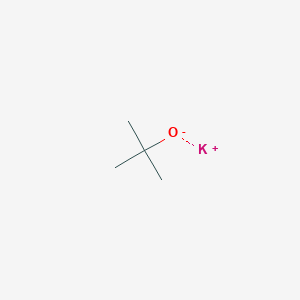At present, wheat has entered the heading and flowering stage, and wheat diseases and insect pests have also entered the peak stage of occurrence. Agro-technical extension departments reminded that wheat ear diseases and insect pests in ear stage mainly include “three diseases, three pestsâ€, ie, stripe rust, scab, powdery mildew, aphids, wheat spiders, and midgeworms. The critical period of prevention and control From now to the end of May, pests and diseases such as stripe rust, roundworm, and midge continue until early June. The rational use of fungicides, insecticides, plant growth regulators or foliar fertilizers can be used to prevent and treat insect pests, as well as to resist natural disasters such as “dry hot air†to achieve one-spray, three-prevention, cost-effectiveness, and quality assurance. the goal of.
According to reports, the agricultural technology department proposed specific prevention and control measures for these major pests and diseases:
1. Wheat stripe rust. In late spring from September to mid-May, Huanghuaihai Wheat Stripe Rust disease implements preventive measures of “discovering one point and preventing and controlling one diseaseâ€, eradicating the epidemic center in time, and reducing the risk of disease epidemic; when the average diseased leaf rate in the field reaches 0.5% or more, Organize large-scale emergency prevention and control to prevent widespread disease.
2. Wheat head blight. Generally in the wheat heading - flowering period for prevention and control, once the missed heading and flower initiation period of the best spraying the appropriate period, the control effect will be greatly reduced. According to the weather conditions, in the case of continuous rainy days, we must adhere to the principles of raising a piece of fruit, preventing and treating a piece of medicine, and comprehensively preventing and treating drugs.
3. Wheat powdery mildew. When the diseased leaf rate reached 10% or the disease index reached 1 or more, spraying control. The commonly used agents are triadimefon, carbazole, and myclobutanil, which are usually sprayed 2-3 times. For high-water-fertilized wheat fields, especially for sensitive field plots in areas with frequent occurrence, disease spots should be promptly screened to control their spread.
4. Aphids in the ear of wheat. When the field has 100-500 strains of 500-800 heads, when the ratio of natural enemies to McCain exceeds 1:150 (more than 150 heads of wheat), acetamiprid, imidacloprid, pymetrozine Agent spray control. A mixed plot of wheat and wheat ear-stage pests and diseases is combined with “one spray and three defenses†to simultaneously treat diseases. Imidacloprid and acetamiprid should not be used singly, and should be mixed with low-toxic organophosphorus, pyrethroids, and other pesticides.
5. Wheat midge. We will focus on the prevention and control of spraying poisonous soil and adult eclosion during the flood season to minimize emergence and egg production. During the flood season, chlorpyrifos can be used to produce poisonous soil, evenly spread on wheat ridges, and watering with poisonous soil is better. Do not use poisonous soil with dew, and in addition, use branches, brooms, etc. to promptly drop the toxic soil that has been floating on the wheat leaves to fully exert its efficacy.
When the adult stage is at the heading stage of wheat, when the ridges are opened with both hands and one or two adults can be seen at a glance, organophosphorus pesticides, pyrethroid pesticides, and other pesticides are sprayed and used, and dichlorvos may also be used to mix wheat bran or fine soil. Scattered in the field in the evening, fumigation control. Repeated administration of the drug should be repeated twice, separated by 3 days, and the adults should be eliminated before spawning.
6. Wheat spiders. When an average of 33 centimeters in length is more than 200 heads, it is possible to use avermectin, bufalin and other agents for spray control.
Potassium Tert-butoxide CAS No.865-47-4
Potassium tert-butoxide Basic Information
CAS: 865-47-4
MF: C4H9KO
MW: 112.21
EINECS: 212-740-3
Mol File: 865-47-4.mol
Potassium Tert-butoxide Structure

Melting point 256-258 °C (dec.)(lit.)
Boiling point 275°C
density 0.910 g/mL at 20 °C
Potassium Tert-butoxide Application
1. Used in pesticides, medicines, printing and dyeing, catalysts, etc.
2. As a strong base, it is widely used in the condensation, rearrangement and ring opening reactions in organic synthesis such as chemical, pharmaceutical and pesticide.
3. It is a moderately strong base commonly used in organic synthesis.
4. The reason why t-BuOK is widely used is that it is inexpensive and readily available, and its basicity changes depending on the selected reaction solvent.
5. For Stobbe condensation, t-BuOK is a better base than EtONa, with higher reaction yield, shorter reaction time, and no side reactions of ketone or aldehyde reduction.
Potassium Tert-Butoxide,Potassium Tert-Butoxide Cas No,Potassium Tert-Butoxide Msds,Potassium Tert Butoxide Formula
ShanDong YingLang Chemical Co.,LTD , https://www.sdylhgtrade.com